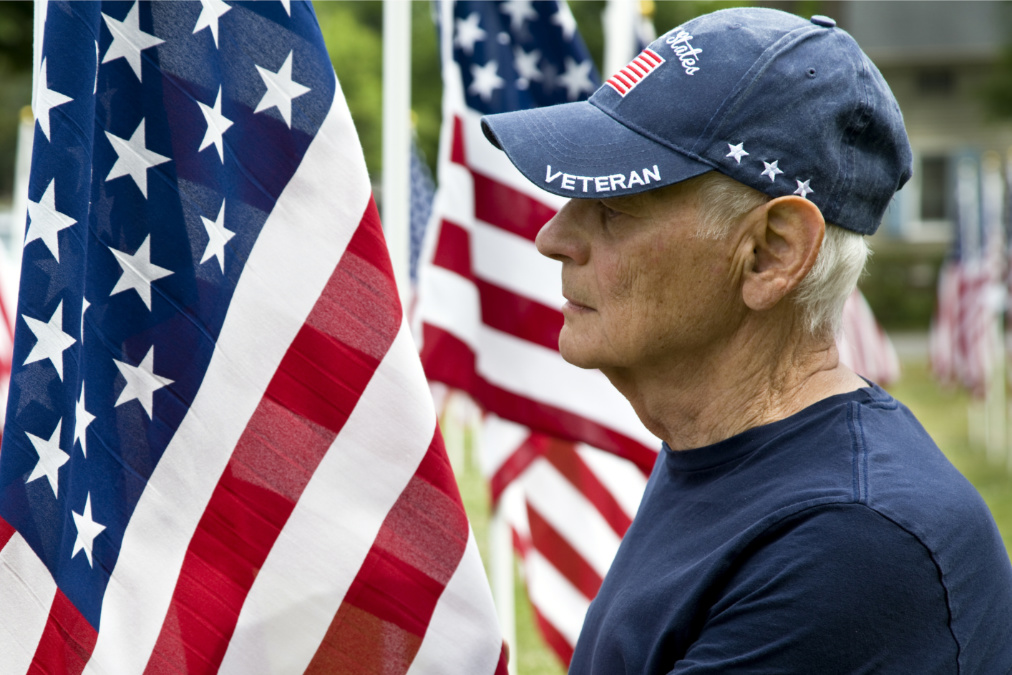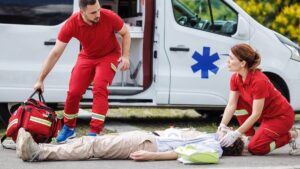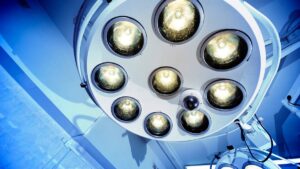ASX imaging stocks target lucrative US veterans health market

Pic: Getty Images
- ASX medical imaging companies are capitalising on lucrative market of caring for US veterans with their innovative technologies
- Mach7 selected as solution provider for Veterans Health Administration National Teleradiology Program
- SHG secures contracts with veterans-support organisations in Florida, Texas and Nevada as part of its 3Dicom for Veterans initiative
With their innovative technology ASX medical imaging companies are capitalising on billions of dollars in contracts annually being awarded to companies by the US Department of Veterans Affairs.
Morgans senior healthcare analyst Scott Power said contracts can be extremely lucrative for healthcare companies, especially given the scale and scope of the Veterans Health Administration (VHA) system, which operates the largest integrated healthcare network in the US.
According to its website, the VHA provides care at 1,380 health care facilities, including 170 VA medical centres and 1,193 outpatient sites of care of varying complexity (VHA outpatient clinics) to over 9.1m veterans enrolled in the VA healthcare program.
Power said a significant draw for healthcare companies was the guaranteed demand. He said contracts offered long-term agreements with reliable funding, creating a stable revenue stream for companies that manage to secure them.
“If successful you can access a very large population of potential patients, which is well supported by the US government,” he said.
The VA often emphasises working with businesses that can scale their services across its national network.
“This broad reach means that healthcare providers often see large-scale business growth and consistent demand,” Power said.
Here are some of the ASX health imaging stocks targeting the veterans health market in the US.
Mach7 Technologies (ASX:M7T)
Specialising in innovative medical imaging software solutions, in July 2023 M7T was selected as a solution provider for VHA’s National Teleradiology Program (NTP).
The NTP is VHA’s in-house teleradiology service and has been providing 24×7 service to VHA facilities for more than a decade.
M7T is part of a consortium that includes Nuance, Blackford AI and Microsoft Azure. The combined solutions will form part of the NTP NextGen picture archiving and communications system (PACS) architecture which is expected to go live by the end of December 2024.
PACS is the infrastructure where medical images are stored and retrieved by practitioners within the same organisation.
The NextGen PACS program involves two major phases. Phase one will see M7T ‘s Vendor Neutral Archive (VNA) and eUnity viewer solutions rolled out with a potential contract value of $11.7m over a three-year term.
Phase two – contingent upon a number of success factors in Phase one – involves expansion into VA’s hospital network to support up to seven Veterans Integrated Services Networks (VISNs) with migration, integration and software. Phase two represents an additional potential contract value of $47.9m over a five-year term.
“As a veteran, I am proud that Mach7 has been given the opportunity to serve this very special part of our community,” Mach7 CEO Mike Lampron told Stockhead.
“NTP is using a best of breed approach for its next generation PACS, which is being designed, deployed and optimised for its teleradiology workflow and reading environment.
“We continue to work closely with our partners to ensure we enable exceptional care for our veterans.”
Singular Health Group Ltd (ASX:SHG)
SHG’s proprietary technology, the Volumetric Rendering Platform (VRP) uses proprietary code and algorithms to quickly and accurately convert standard 2D medical images into volumetric 3D models. The platform is the foundation for the 3Dicom Viewer, 3DicomVSP and GeoVR software solutions.
Developed in 2017 to assist in visualising a complex cancer case, SHG said the initial algorithms have been continually developed with hundreds of diverse scan formats to generate a ubiquitous platform capable of rendering more than 95% of CT/MRI & PET scans.
SHG received 510(k) clearance from the US Food and Drug Administration in 2022 for 3Dicom as a Class II Software-as-a-Medical Device (SaMD).
Where the company sees real commercial opportunity is viewing, sending and storing the images for patients and healthcare systems, including veterans.
In the US patients are often sent their images on CDs, where doctors and care teams often don’t even have a CD reader for viewing.
SHG said for patients who are visiting doctors regularly with chronic illnesses or injuries like many veterans, managing images on CDs can be difficult and adds delays to diagnosis and extra costs.
3Dicom integrates with most PACS servers, allowing for the easy retrieval of DICOM files for viewing in fully immersive 3D, VR and XR. DICOM is an international standard for medical image files.
The PACT ACT, passed by the Biden Administration, allowed for funding to be put towards medical imaging for veterans injured through exposure to burn pits or toxic chemicals.
SHG has secured enterprise contracts with local veterans support organisations in the US states of Florida, Texas and Nevada as part of its 3Dicom for Veterans initiative.
“The PACT act provides veterans with funds to get medical images but they still need to be able to access and share their images between facilities,” SHG said.
“We’ve sold about 15,000 licenses to date in a scaleable model which sees local veterans support organisations being sponsored and purchasing licenses on behalf of the sponsors.”
4D Medical (ASX:4DX)
4DX offers advanced lung imaging technology called XV, which provides detailed views of the lungs and can enhance existing scans like X-rays.
Founded in 2013 by CEO and managing director Dr Andreas Fouras, the company’s technology is considered a game-changer for respiratory imaging.
Its CT-VQ software, based on the XV technology, is designed to detect diseases such as pulmonary embolism – a serious condition where a lung artery gets blocked by a blood clot.
Currently detecting this condition is complex and costly, involving radioactive dye and expensive scans. But 4DX’s CT-VQ software can detect it using a regular CT scan, making the process quicker, cheaper and safer.
The company is also working on XV LVAS, another product using XV technology that provides detailed images of lung function and movement.
The technology could replace outdated diagnostic tools like traditional X-rays and spirometry, offering a clearer and quicker diagnosis for lung diseases.
4DX is targeting big opportunities in the US veterans market, where many suffer from lung conditions due to their service.
Broker Ord Minnet told Stockhead it was optimistic about 4DX for several reasons, including a reseller agreement with global giant Philips, which was announced in late September.
Together, Philips and 4DX will deliver lung function analyses for all lung disorders, including unexplained dyspnoea (shortness of breath), asthma, COPD, and interstitial lung disease (ILD).
“The agreement with Philips sets a new benchmark in lung health and transforms our ability to deliver our technology to patients and their doctors,” Fouras said.
“Central to the collaboration between Philips and 4DMedical is a drive to address the significant health challenges faced by veterans due to military toxic exposures.
“This ongoing collaboration is a pivotal strategy to provide advanced care and support for those who have bravely served.”
At Stockhead, we tell it like it is. While Singular Health is a Stockhead advertiser, the company did not sponsor this article.
Disclosure: The journalist held shares in Mach7 at the time of writing this article.

UNLOCK INSIGHTS
Discover the untold stories of emerging ASX stocks.
Daily news and expert analysis, it's free to subscribe.
By proceeding, you confirm you understand that we handle personal information in accordance with our Privacy Policy.








